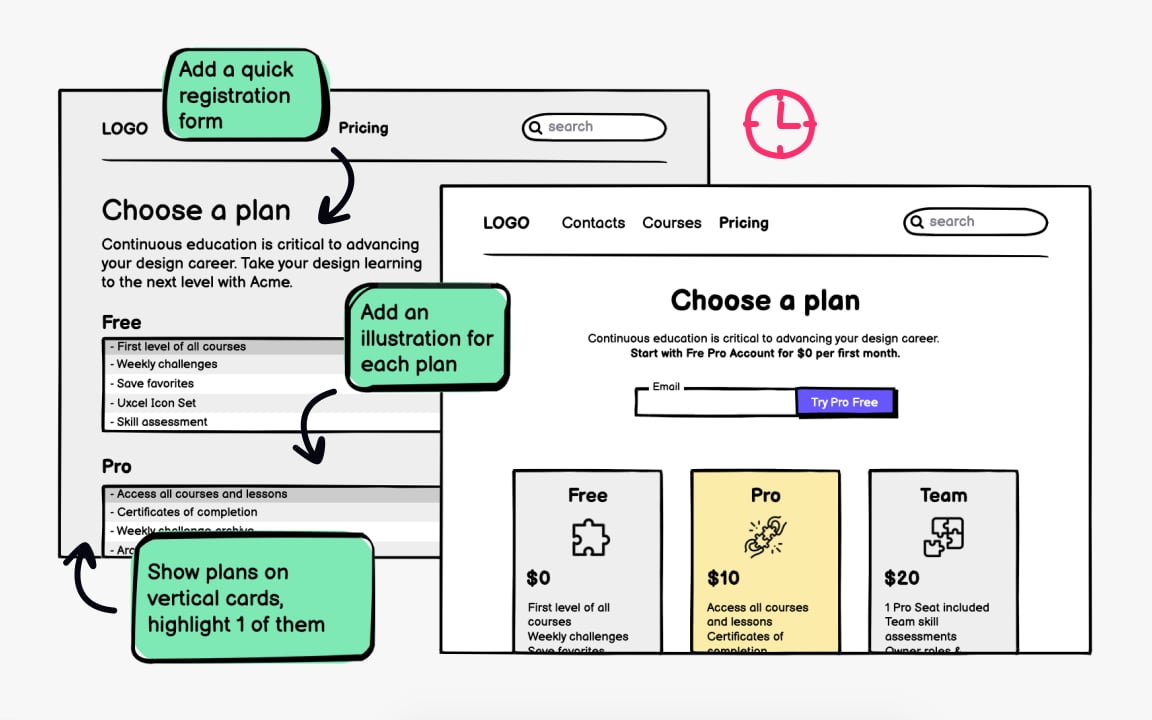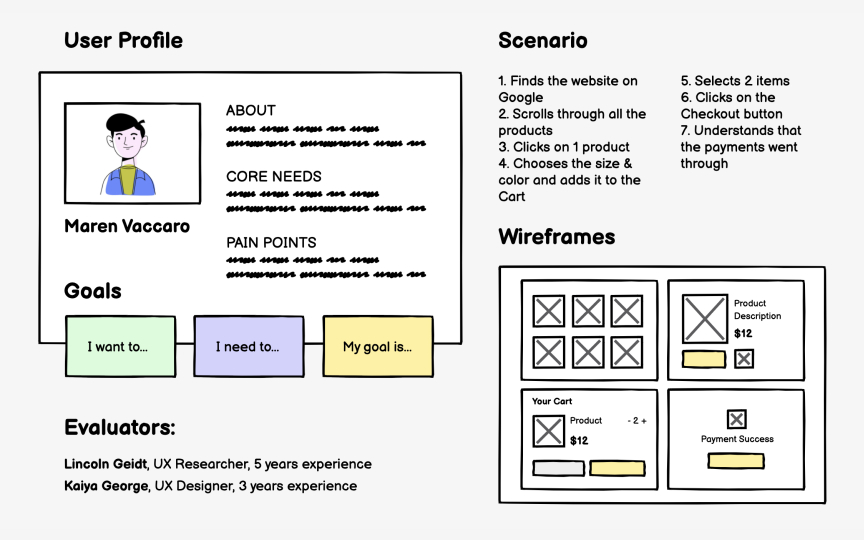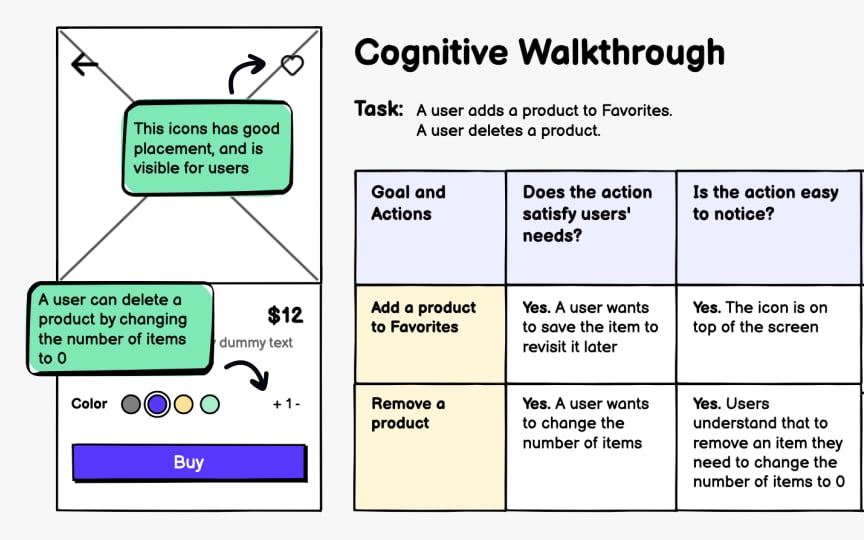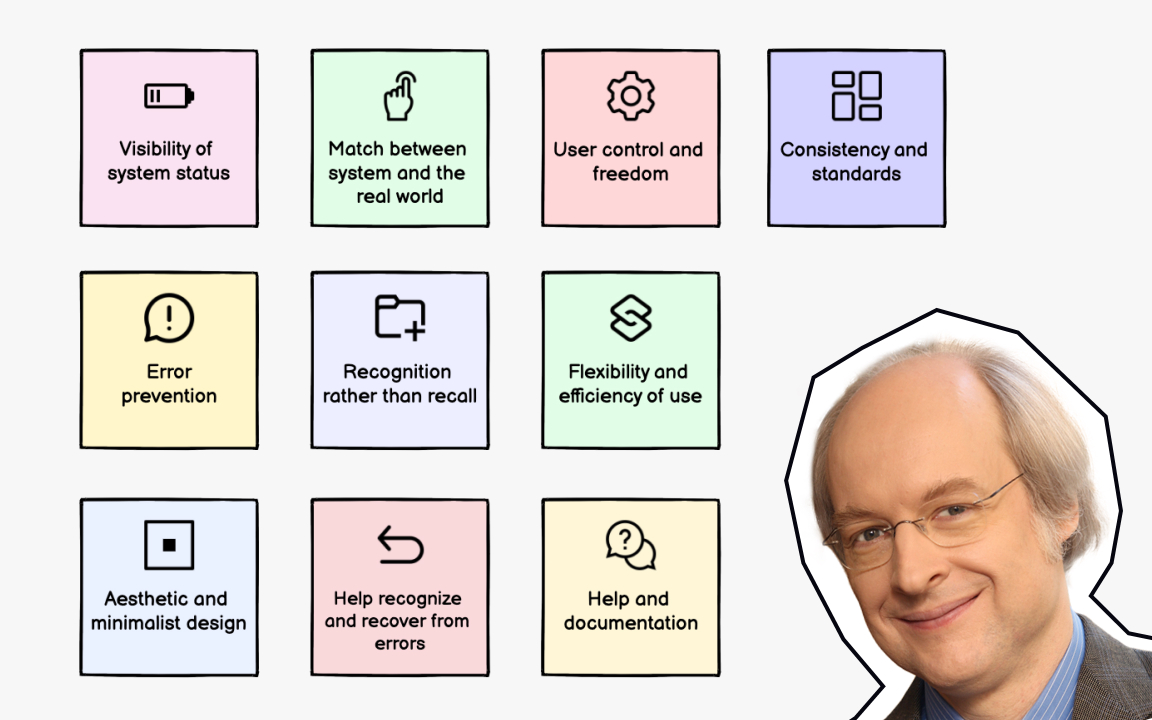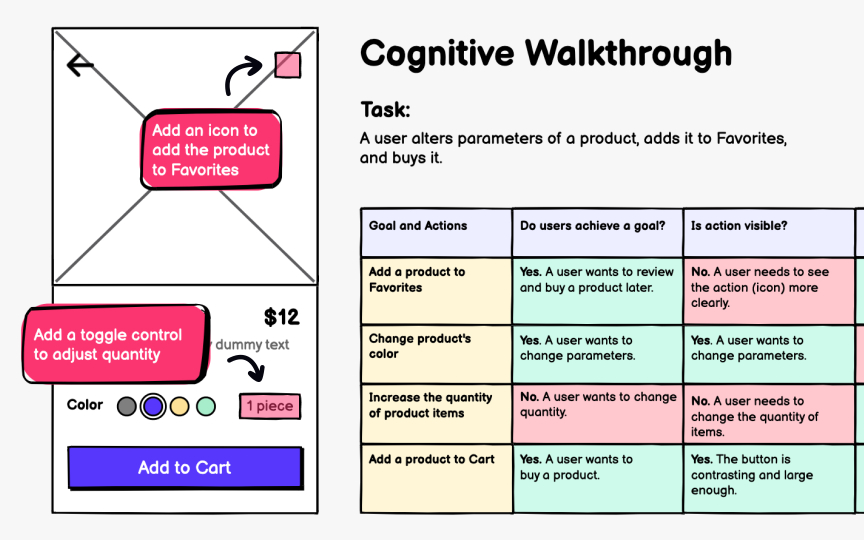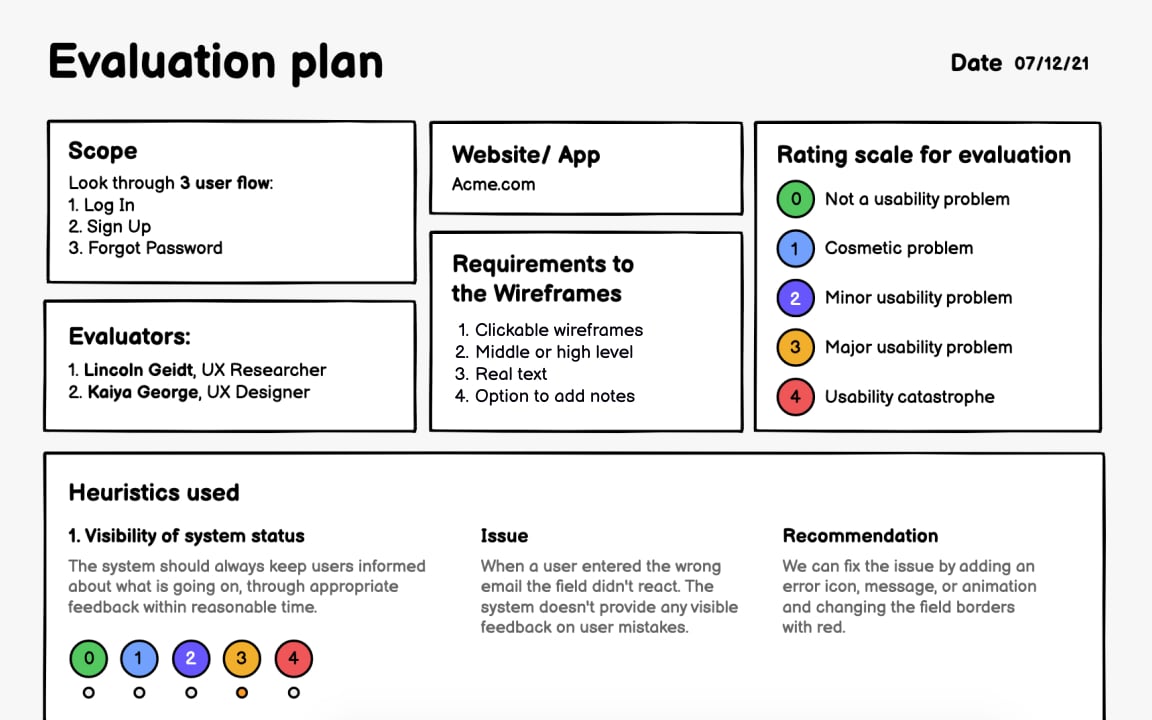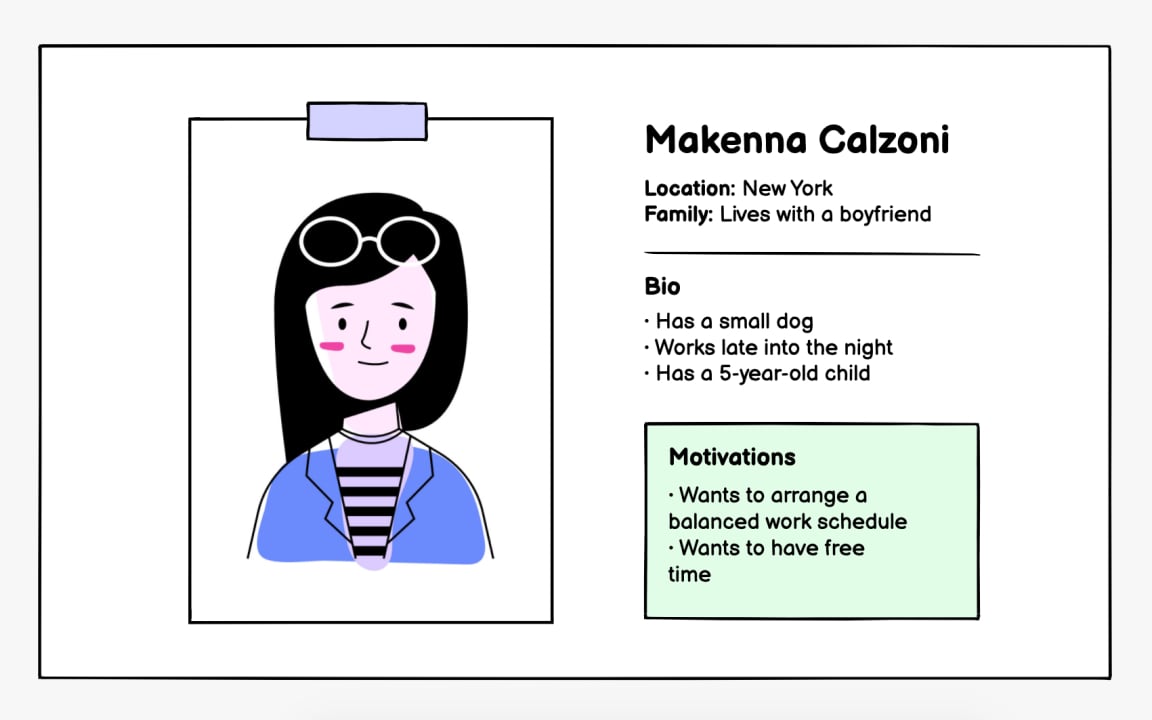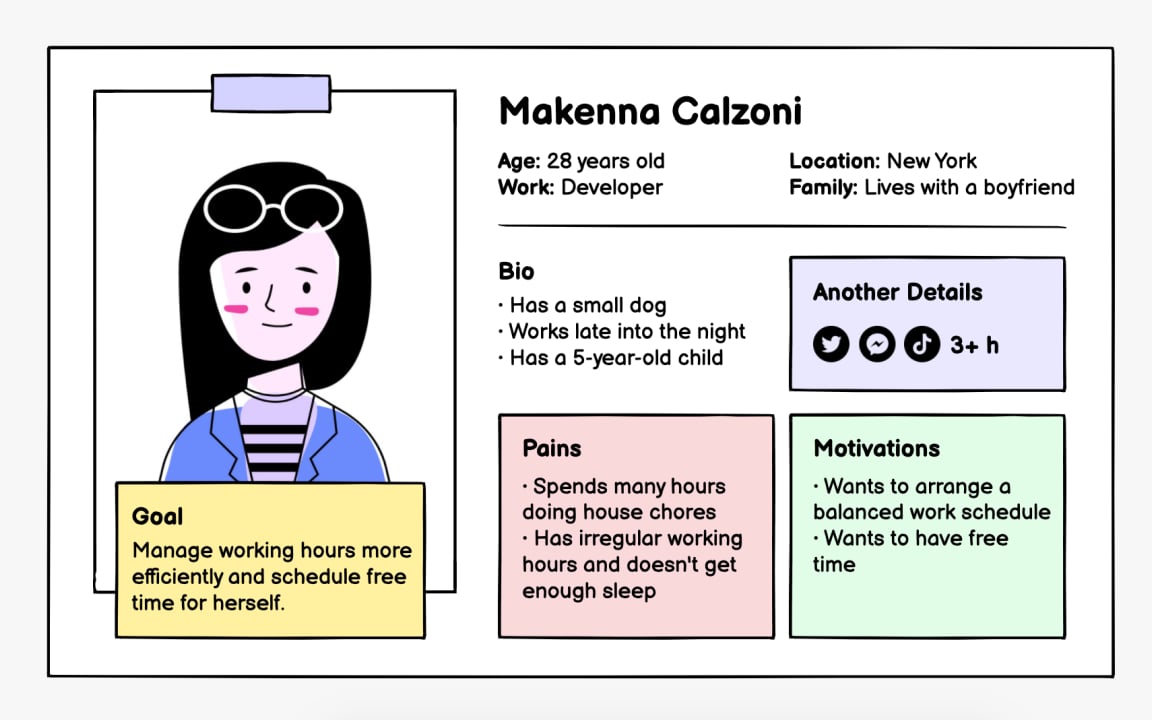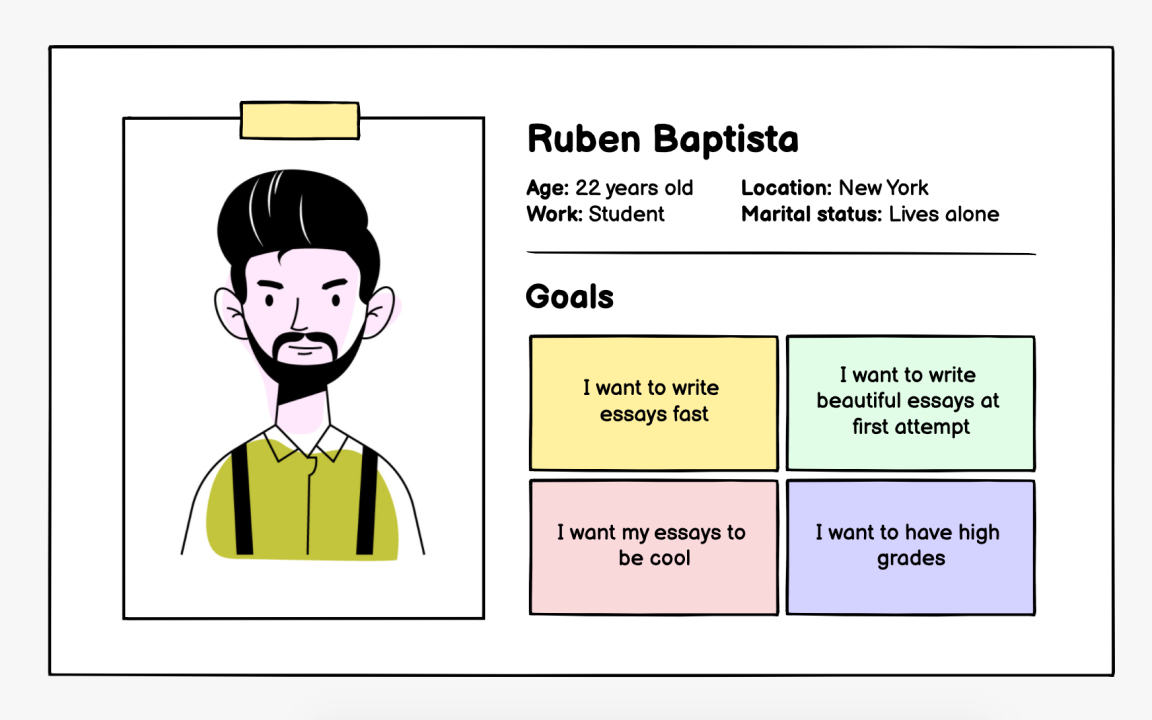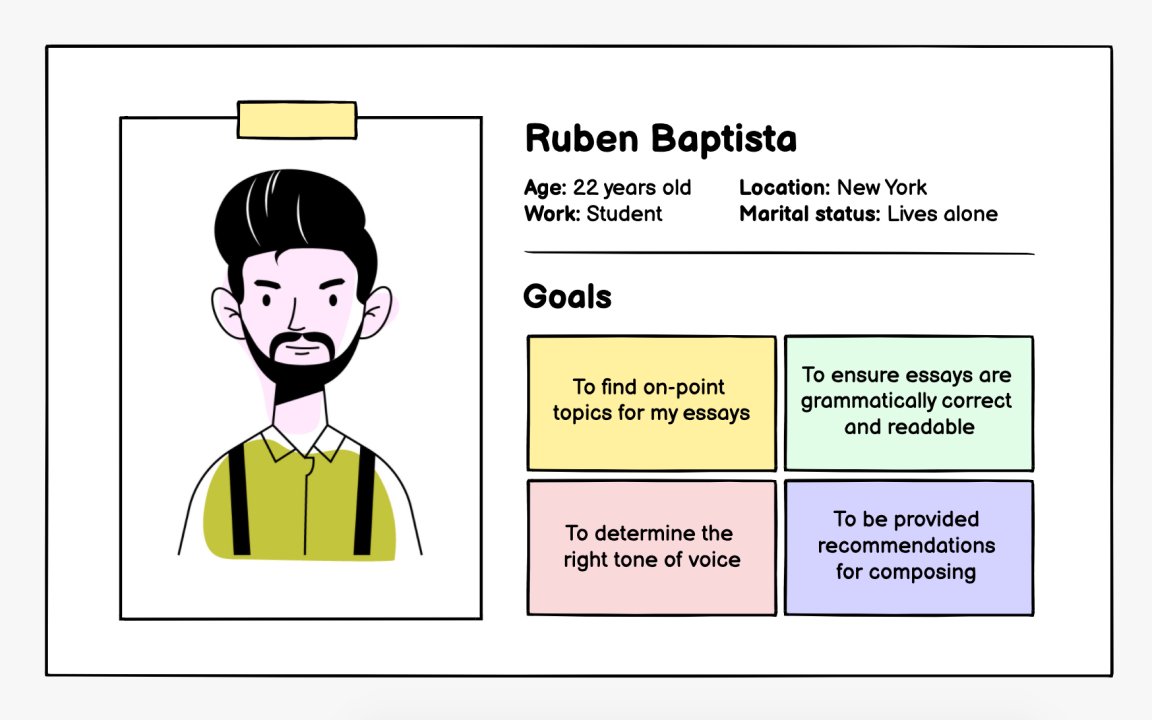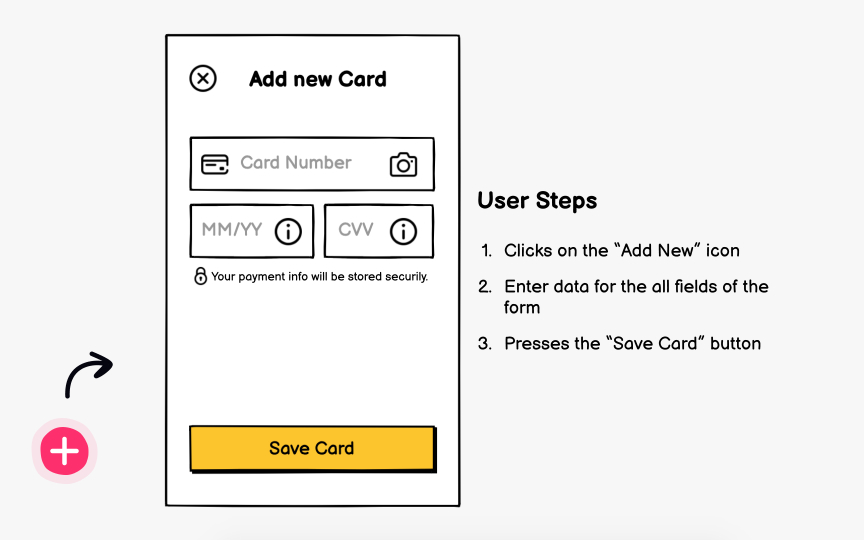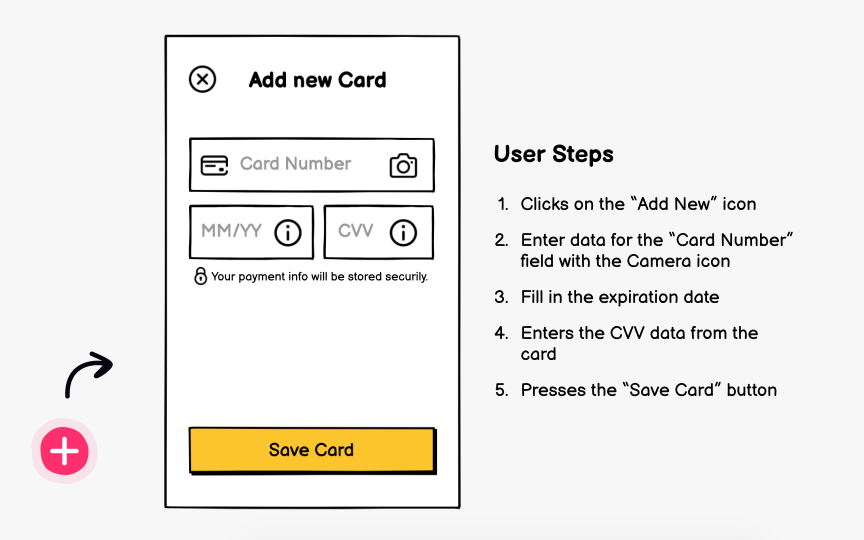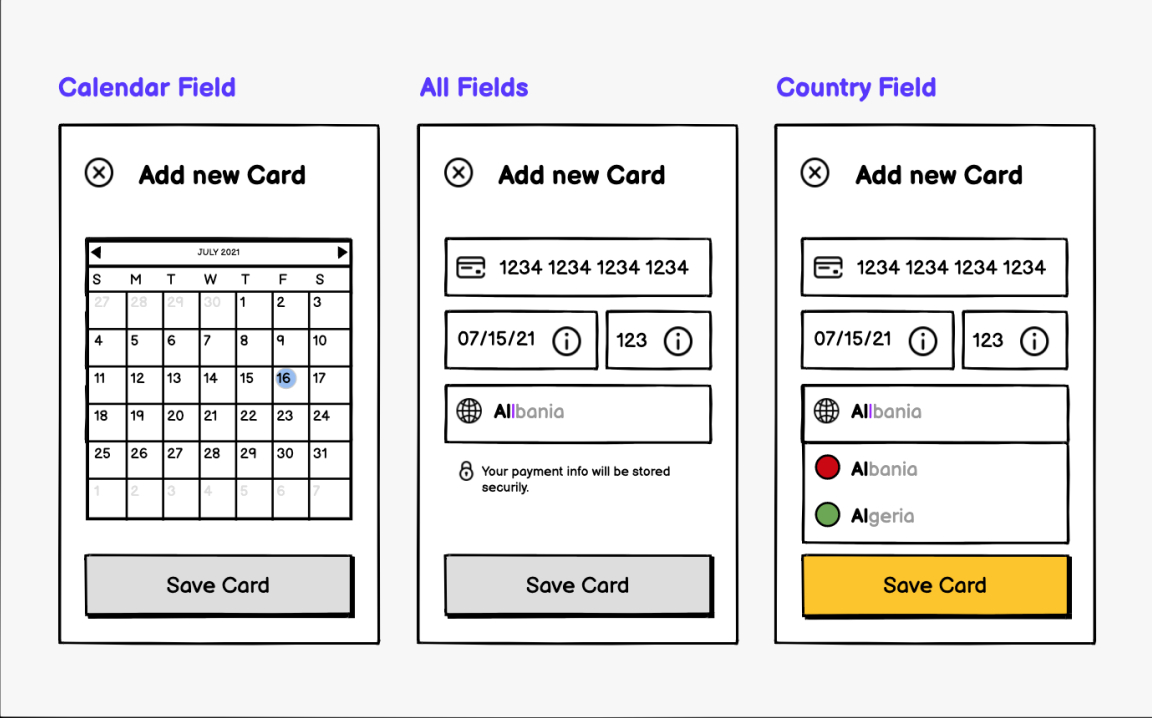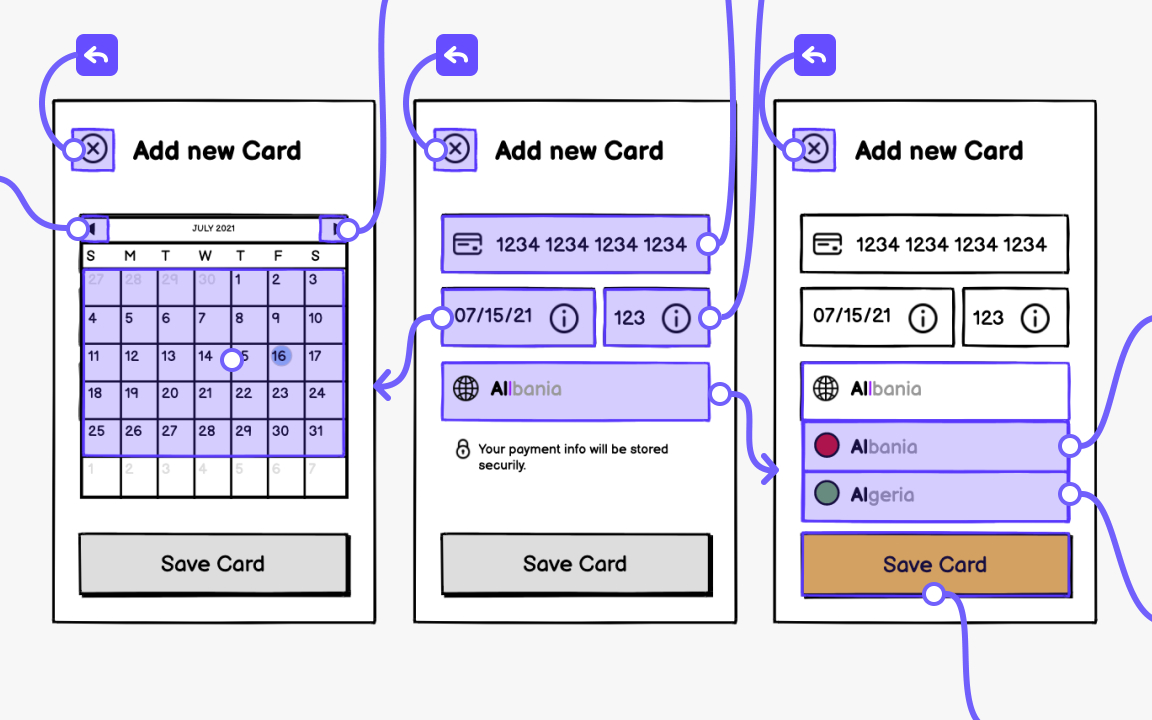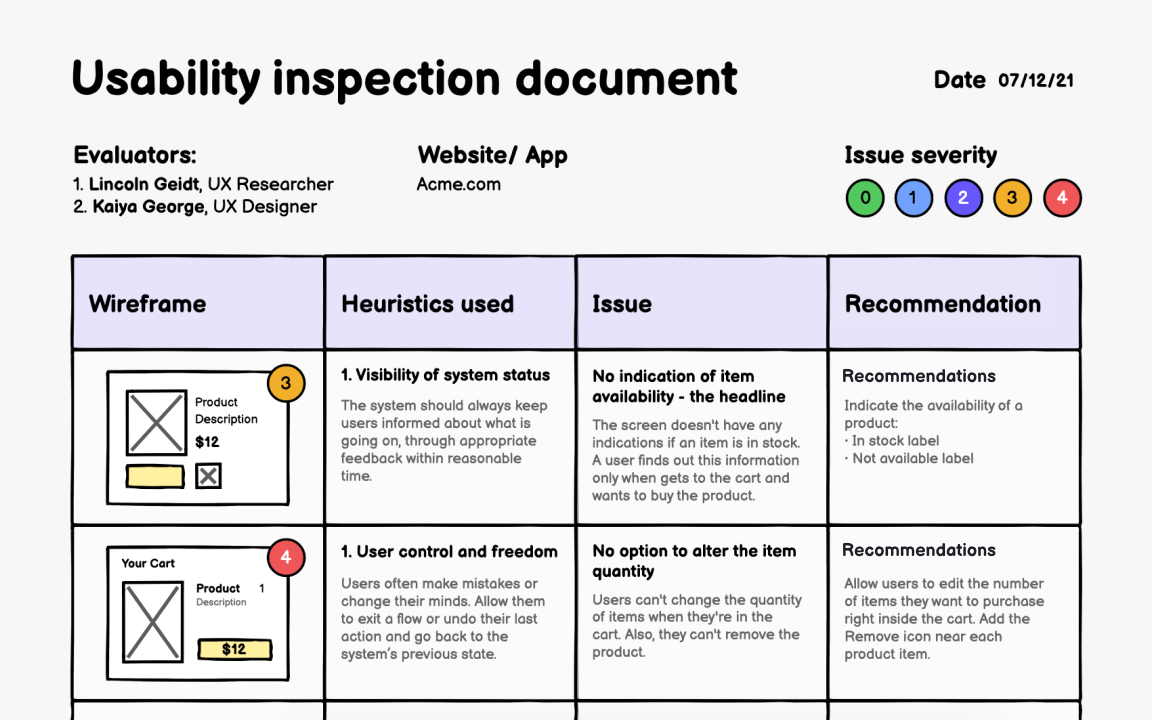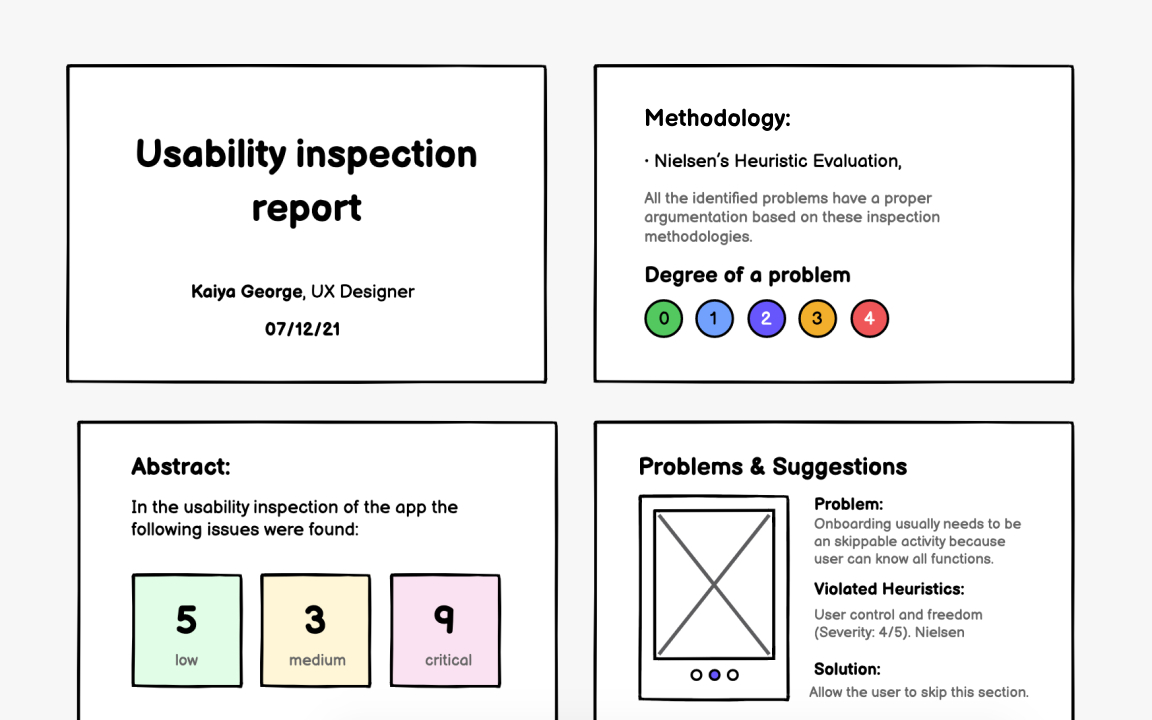Wireframes Usability Inspection
Learn how to conduct usability inspections on wireframes leading to actionable recommendations and iterative improvements that enhance overall usability and user satisfaction
You might wonder why you need to test wireframes and not just the final product. Think of it as reviewing a 3D model or blueprint of a house before you begin building. You want to make sure that you don't have hallways leading to nowhere or forgot to include a bathroom.
Testing final designs on an already functioning product means that you can only discover bad UX at the last stages of product development. At this point, revising and rebuilding may cost a fortune. You'll need to repeat some parts of the design process: generate new ideas, evaluate risks and constraints, collaborate with designers and developers, etc.
That's why teams should start testing wireframes at the very early stages. Functionality is harder to test with static drafts, but you can certainly inspect key functions and user flows.
The best way to test wireframes is to get user feedback via interviews or usability testing. If you don't have access to your target audience, usability inspection methods are the ideal solution. They rely on heuristics, best practices, and user scenarios. Usability inspections allow you to evaluate the UX and fix usability issues without involving real users.
You might think that testing wireframes makes no sense and it's a waste of time. Let's imagine the opposite — suppose you wait until the final product is ready. The product is launched and users are already exploring it. User feedback shows UI inconsistencies, unappealing design, navigational issues, and other bugs. At this point, it'll cost you a lot of time and effort to investigate problems and find solutions.
So that's the main argument for
Usability inspection usually involves evaluators — experts in evaluating interfaces — and a list of usability principles.
The most popular methods of usability inspection include:
- Heuristic evaluation
- Cognitive walkthrough
- Feature inspection
- Consistency inspection[1]
At first glance,
- Usability inspection methods are based on theoretical principles. They can't replace an actual user interview or observation of users performing tasks in your app. Ideally, inspection should be followed by user testing.
- An evaluator is a human being, and they have their own biases.
- While
heuristics and usability principles are universal they can become outdated over time. A better strategy is to create heuristics tailored to your product and brand.
Jacob Nielsen's heuristics are the most commonly used list of usability heuristics. They were written back in the 1990s and are still relevant, although you might want to adjust them to current technologies.
The list includes 10 heuristics:
- Visibility of system status
- Match between system and the real world
- User control and freedom
- Consistency and standards
- Error prevention
- Recognition rather than recall
- Flexibility and efficiency of use
- Aesthetic and minimalist design
- Help users recognize, diagnose, and recover from errors
- Help and documentation.[2]
Cognitive walkthrough is one of the
To conduct an efficient
You might need to have at hand:
User profile (s)- Goals
- Scenarios
- Wireframes
- Evaluators
Ultimately, the usability inspection should define the scope — you can't test all functionality at once. Based on user goals, you decide what features and scenarios you want to include in the scope. Then select wireframes that you need for this testing session. Leave out scenarios that are outside the scope at this point.
There are many ways to get this data:
- Conduct user
interviews - Evaluate analytics
- Investigate your competitors
- Make use of other research tools within your budget and time limits
Create a user persona based on these findings. A user persona is a semi-fictional character that represents your target audience. You can add some demographic details if you want. More importantly, you need to define user needs, goals, frustrations, and motivations. You can also add skills and other background information.
Usually, goals define a need that users want to fulfill. But in inspection evaluation, goals are what users actually get when they complete a task. Also, having goals helps evaluators stay on track when they go through a scenario. Basically, evaluators assess if it's easy to accomplish the goal — or if the journey involves guesswork or friction.
When formulating goals, be specific and highlight the benefits for users. For example, the goal "I want to write good essays" is too generic. Be more specific — for example:
- "I want to get topic recommendations"
- "I want to improve my grammar and style"
- "I need writing tips"
A scenario refers to a list of actions users need to perform to complete the task to achieve their goal. And that's how designers usually define scenarios, based on user needs and goals. Teams can also make assumptions about how users navigate the product. Inspection evaluation and
When composing scenarios, ask yourself the following questions:
- Who is going to take the route and complete the task?
- What goals do they pursue?
- When do they usually perform this task?
- Where do they perform this task?
- Why do they need to do it?
Pro Tip: Avoid technical jargon when formulating actions. It will help all team members and stakeholders understand scenarios and provide feedback.
So you've set the scope and defined what features you want to test and what user goals they help achieve. The next step is creating wireframes to help you visualize the features of your inspection.
Make sure the wireframes are detailed enough, contain
In any case,
Evaluators are individuals who have the expertise to perform
Regardless of evaluators' skills and experience, their opinions can still be skewed by their own biases. Another issue is that they're not typical users of the product, which means that their simulated experience isn't 100% accurate.
Companies can involve several independent evaluators to receive a more comprehensive evaluation.
Documenting your testing is as essential as planning. First, it keeps things recorded so you can refer to them at any time and share them with other team members. Second, documented insights and notes may provide some food for thought at later iterations. Third, documenting allows everyone to follow the track of the inspection flow.
For example, if you conduct a heuristic evaluation, document the following:
Wireframe name orUI element- Violated
usability heuristic - The issue's severity
- Recommendations on how things can be improved
You'll also need this information for formulating the final report on
A
Essentially, the final report should describe the usability problems you found and how they affect
References
- Usability Inspection Method Summary: Article by Jakob Nielsen | Nielsen Norman Group
- 10 Usability Heuristics for User Interface Design | Nielsen Norman Group
Top contributors
Topics
From Course
Share
Similar lessons

Intro to Wireframing

Wireframe Fidelity

